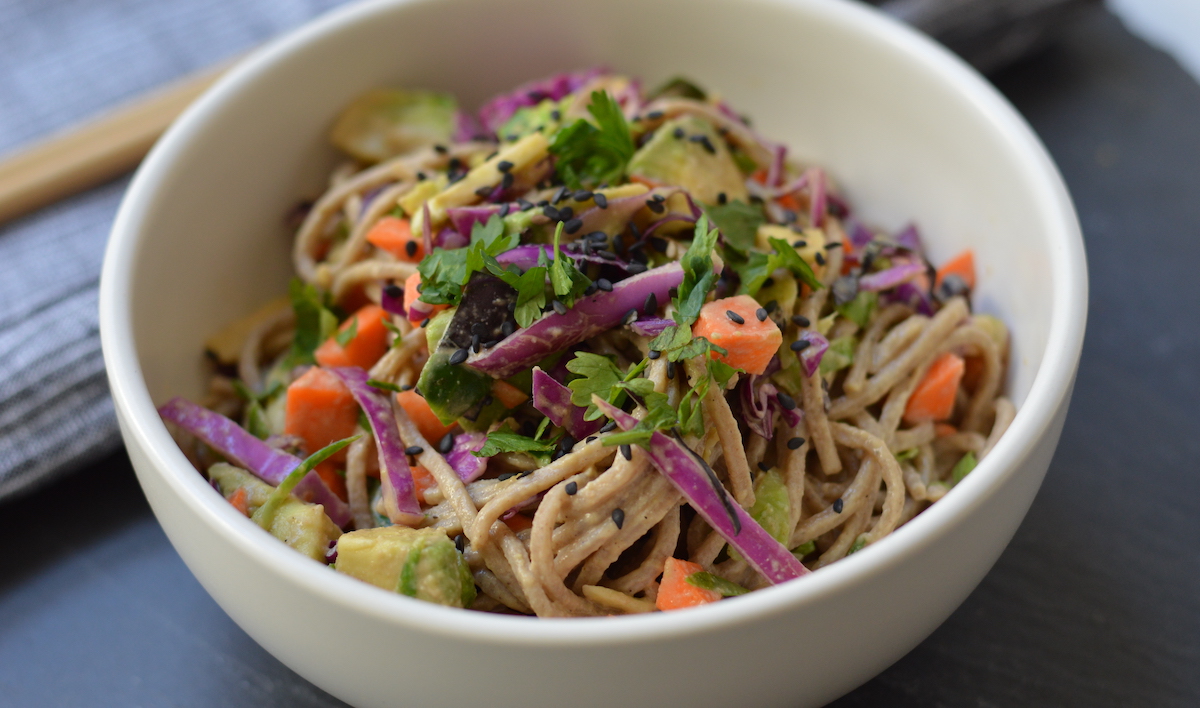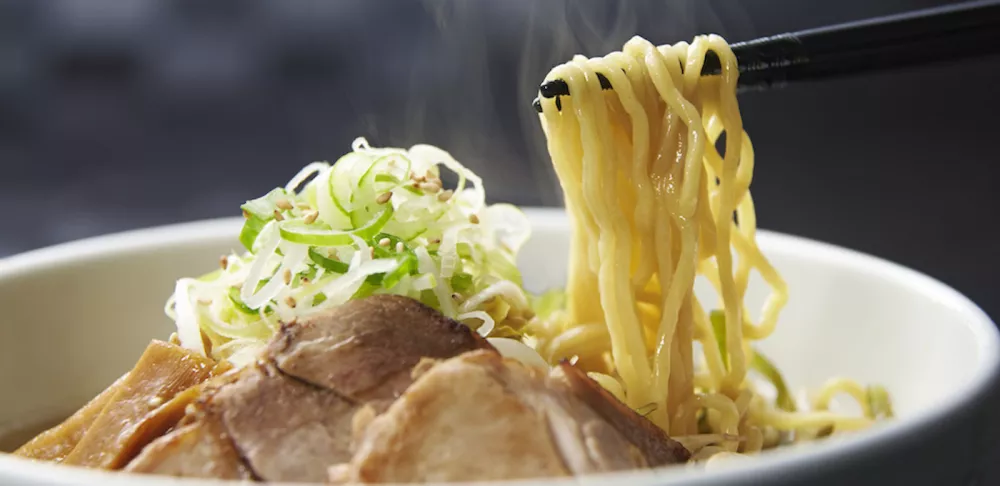Japanese cuisine has China to thank for its noodles. Introduced to Japanese cuisine during the early centuries of the Common Era, wheat-based noodles were originally brought over from China, along with various culinary techniques and cultural influences.
Initially, these Japanese noodles were prepared in a similar style to Lamain (拉面), the classic hand-pulled Chinese noodle. Over time, Japanese chefs adapted and transformed these noodle dishes according to their own regional cuisines, giving rise to unique Japanese noodle types and various Japanese noodle recipes.
Some of the fundamental changes that occurred during this evolution include the addition of rich pork-based broths, and the inclusion of toppings such as chashu pork, bamboo shoots, and soft-boiled eggs, as well as heavy usage of soy sauce. The popularity of noodles continued to grow throughout Japanese history, especially booming during the Meiji period, evolving into a staple ingredient and an integral part of Japanese culinary history.
Ramen

Ramen is the strongest example of how Chinese cuisine made its way into Japan.
These noodles are typically made from flour, salt, water, and alkaline mineral water called “kansui”, which gives the noodles their distinctive chewy texture and flavor. These traits make ramen nearly identical to its ancestor - lamian noodles. Lamian noodles are hand-pulled, bouncy Chinese wheat noodles that use a special ingredient called penghui to add a chewy texture and mildly sulfuric undertone. In the early stages of their evolution to what we now know them as, these Japanese ramen noodles were hand-pulled and stretched just like their Chinese counterpart.
However, with time, Japanese noodle-masters began kneading the dough to be rolled out and then cut into thin noodles. Ramen is typically served in a flavorful broth, with toppings such as sliced pork, boiled egg, bamboo shoots, and scallions. This noodle type itself has become an entire complex portion of Japanese cuisine, as ramen flavors and modifications grew with regional differences and changes in history.
Read More:Ramen vs Pho
Udon

Udon may be the second most popular type of Japanese noodle after ramen.
Japanese udon noodles are thick and chewy, yet tender with a subtly sweet undertone. The dough for udon is made by mixing wheat flour, salt, sometimes a small pinch of sugar, and water before kneading it until it becomes smooth. The dough is then rolled out and cut into thick, delicate noodles.
Just like the majority of Japanese noodles, udon is usually boiled before serving. Japanese udon noodles can be served hot or cold and are often used in gentle, clear soups like Kakejiru or heavier stir-fry dishes like Yakiudon. The mellow flavor imparted by this noodle makes it great for adding a filling component to a dish without disrupting its dominant flavors.
Somen

Thin and pale, somen noodles are often compared to angel hair pasta or even Chinese rice noodles due to their appearance. The dough for somen is made from wheat flour and water, with vegetable oil usually rubbed on the dough before it is rolled out and stretched.
The stretching process takes the longest, as often the dough is stretched and twisted into extremely long ropes before being sliced into thin strands. Even when sliced, somen noodles often maintain decent length when compared to other noodle types. The Japanese noodles are then boiled in salted water for a few minutes until they are al dente. They are then rinsed in cold water to stop the cooking process and drained before being served.
Although somen can be served with a hot soup or broth; it is primarily enjoyed cold with a dipping sauce made from soy sauce, dashi, and mirin. Somen can also be served with toppings such as thinly sliced cucumber, grated ginger, or chopped scallions.
Somen's refreshing and light flavor makes it an extremely popular choice in Japan during hot weather. It can be enjoyed as a cooling snack or as a light, refreshing meal to help combat the heat.
Soba

Soba noodles are made by combining buckwheat flour and wheat flour with water to form a dough, which is then rolled out and cut into thin, long strips. Soba noodles are very similar to their other noodle siblings, however, the addition of buckwheat flour makes all the difference.
One of the defining characteristics of soba noodles is their nutty, earthy flavor. It’s the use of buckwheat flour in the dough that gives the Japanese noodles a distinctive taste, which that sets them apart from other types of noodles.
Buckwheat is also high in protein and fiber, and contains essential amino acids that add more nutritional content to the noodle in comparison to regular flour-based noodles.
Just like somen, soba is popularly served cold with a dipping sauce made from soy sauce, mirin, and other ingredients. Soba can also be eaten like a salad, combining the noodles with a variety of freshly sliced vegetables and a light dressing.
Recipe:Chilled Soba with Gochujang Dressing
Shirataki
Shirataki noodles, also known as konjac noodles, are a type of Japanese noodle made from the konjac yam. They are casually called "miracle noodles" due to their low calorie and carbohydrate content. They are also gluten-free, making them popular for people with restrictive diets.
The noodles are made by mixing the konjac yam flour with water and limewater, giving them their unique texture. Limewater is an alkaline water solution, but is not the same type that is used in ramen. Ramen and similar noodles often use lye water. Lime water is made by dissolving calcium hydroxide (also known as hydrated lime) in water, whereas lye water is made by dissolving sodium hydroxide (also known as caustic soda) in water. They are both generally called alkaline water due to having a pH greater than 7, but this technical difference is what separates lime from lye.
The noodles are translucent and have a chewy, slippery, and gelatinous texture from the high amount of glucomannan they are made with. Glucomannan is a soluble dietary fiber that comes from the konjac yam flour. This fiber is often used in Southeast Asia to help promote fullness or aid in bowel regularity.
Shirataki noodles have virtually no flavor of their own, but can absorb the flavors of the sauces or broth they are cooked in. They do require a water soak and a rinse before cooking them, as the liquid they are packaged in can sometimes have a strong smell.
The texture of shirataki noodles can often take someone by surprise, but they are popular among those looking for a somewhat healthier alternative to traditional Japanese noodles.




